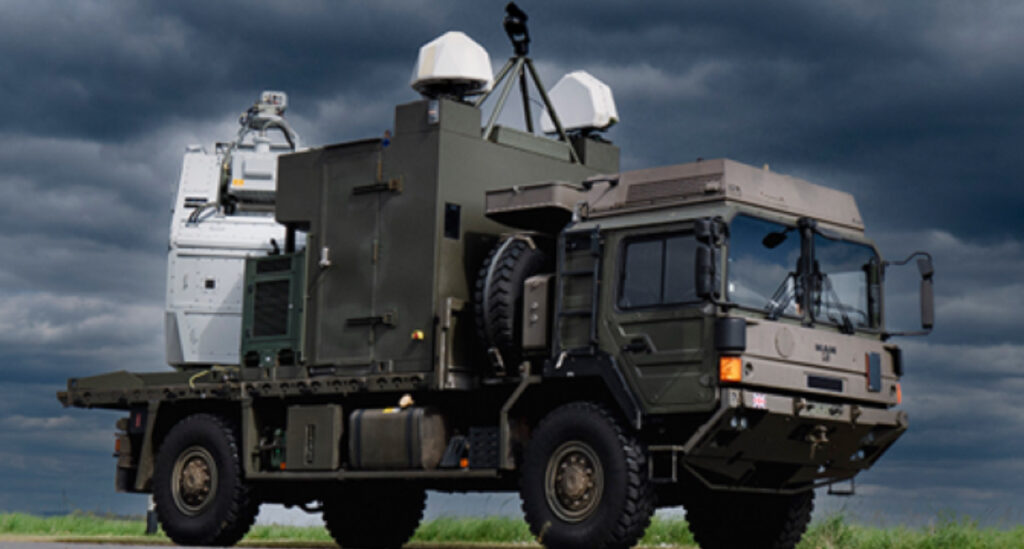In a major milestone for British military innovation, the UK Army has successfully tested a homegrown directed energy weapon designed to counter drone threats.
The Radio Frequency Directed Energy Weapon (RF DEW), known as RapidDestroyer, was developed by a Thales-led consortium and demonstrated its ability to detect, target, and neutralise drone swarms during large-scale trials in West Wales.
The weapon uses radio frequency energy to disable or destroy the electronic systems of unmanned aerial vehicles (UAVs). During the trials—described as the UK Army’s largest-ever anti-drone exercise—RapidDestroyer engaged and defeated more than 100 drones, including two swarms in a single engagement. The system proved highly cost-effective, delivering results at just 10p per shot.
Directed Energy Weapon Could Revolutionise UK Drone Defence
The RapidDestroyer RF DEW is capable of defeating airborne threats at ranges of up to 1km (0.6 miles), and is particularly useful against drones resistant to jamming. Unlike conventional missile-based defences, RF DEW offers a low-cost, high-frequency alternative to counter mass drone attacks, a threat that has become increasingly urgent since the outbreak of the Ukraine war. According to UK Defence Intelligence, Ukraine faced over 18,000 drone attacks last year alone.
The trials were delivered by Team Hersa, a collaboration between Defence Equipment & Support and the Defence Science and Technology Laboratory (Dstl). Thales UK led the industrial consortium that developed the RapidDestroyer prototype. Sgt Mayers of the 106 Regiment Royal Artillery became the first British soldier to down drones using an RF weapon, calling the system “quick to learn and easy to use.”
RF Weapons to Strengthen National Security and Airport Safety
The British Ministry of Defence sees RF DEW systems as a key element in the UK’s future layered air defence strategy. In addition to battlefield deployment, the technology could be used to defend high-risk zones such as defence installations and airports from rogue drones.
Defence Minister for Procurement and Industry, Maria Eagle, hailed the project as an example of British technological excellence. “This significant experiment exemplifies the strength of British innovation, driven by our home-grown industry, technology firms, and scientific talent,” she said.
The UK Government has invested over £40 million in RF DEW research and development, supporting 135 jobs in Northern Ireland and South-East England. In parallel, the UK is also developing a high-energy laser-based system called DragonFire, led by Dstl in partnership with MBDA, Leonardo, and QinetiQ, with an investment of £100 million.


